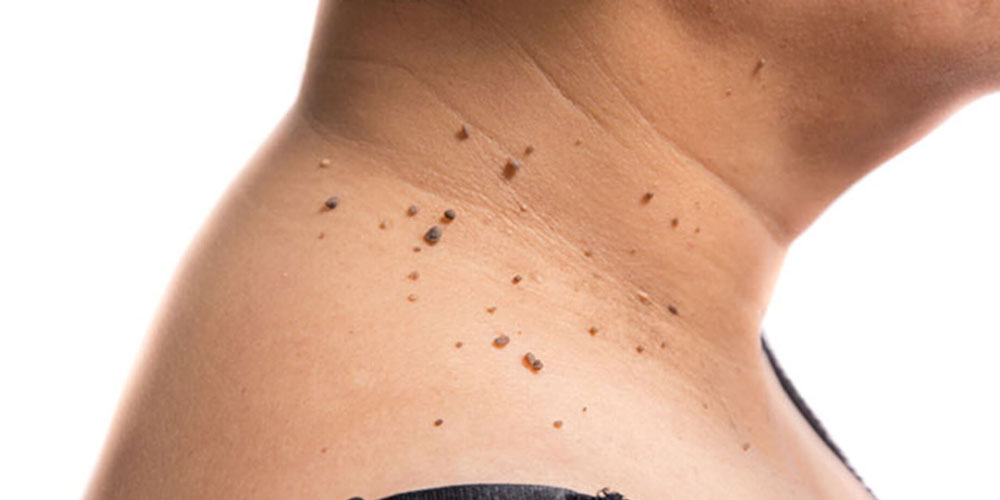Is My Skin Lesion Benign or Malignant?
 "Skin Lesion" is a pretty broad term for a host of skin abnormalities that exist. To put simply, a lesion is any abnormal change or damage to the skin tissue, usually caused by disease or trauma.
"Skin Lesion" is a pretty broad term for a host of skin abnormalities that exist. To put simply, a lesion is any abnormal change or damage to the skin tissue, usually caused by disease or trauma.
When you first see a dermatologist for the treatment of a skin lesion, they will determine whether your type of lesion is primary or secondary.
- Primary Skin Lesions: present at birth (birthmark) or acquired over time (age spot)
- Secondary Skin Lesions: natural progression and/or aggravation of primary skin lesions
Benign Skin Lesions
 A benign skin lesion is a noncancerous growth, tumor, or anomaly that can appear anywhere on the body and can appear in a variety of ways. Freckles are a form of benign skin lesions; the medical term is ephilides. Some other examples of benign skin lesions include:
A benign skin lesion is a noncancerous growth, tumor, or anomaly that can appear anywhere on the body and can appear in a variety of ways. Freckles are a form of benign skin lesions; the medical term is ephilides. Some other examples of benign skin lesions include:
- Moles
- Seborrheic Keratoses
- Skin Tags
- Cherry Angiomas
- Lipomas
- Corns or Calluses
- Epidermoid Cysts
Benign skin lesions are usually symmetrical in shape, uniform in appearance and color, stable and/or slow growing. Unless these skin lesions create symptoms like discomfort, itching or bleeding, they are usually harmless. Most of the time, they impact confidence and that's where board-certified dermatologist, Monica McCrary can help you!
Malignant Skin Lesions
Malignant lesions are skin cancer. Skin cancer can manifest itself in a variety of ways, including fast-growing lesions on the skin, changes in the color or size of a pre-existing lesion, or a scabbing sore that does not heal with time.
Keratinocyte carcinoma, which include basal cell and squamous cell carcinomas, and melanoma are the two most common kinds of skin cancer.
Basal Cell Carcinoma

- Most common type
- Appearance: Flesh-colored round growth, pearl-like bump, pinkish patch of skin
- Location: Common on the head, neck, and arms
- Can grow deep to nerves and bones if not treated
Squamous Cell Carcinoma

- Second most common type
- Appearance: Red firm bump, scaly patch, or a sore that heals and then re-opens
- Location: Skin that gets sun exposure: face, ears, neck, arms, chest, back
- Can grow deep, causing damage and disfigurement
- Can develop from precancerous skin growth like actinic keratosis.
Melanoma

- The deadliest type of skin cancer
- Appearance: develops inside an existing mole or as a dark spot that looks different from other spots.
Your Skin’s Health is Our Specialty
Dr. Monica McCrary of Boerne's Cibolo Creek Dermatology Group, is experienced and uses up-to-date technology to diagnose lesions.
Once a thorough assessment of your skin is made -- patient history, risk factors, and history, location, appearance of the lesion, Dr. McCrary can recommend the appropriate treatment or surgery to remove the lesions and have them tested for malignancy. Throughout this entire process, including the biopsy, our team of certified, trained, and experienced medical professionals are at your service to offer the comfort and the individualized skin treatment you need.
Let us be your preventative partner against skin cancer, Call us today at (830) 971-5256 or request an appointment online for your own peace of mind.
